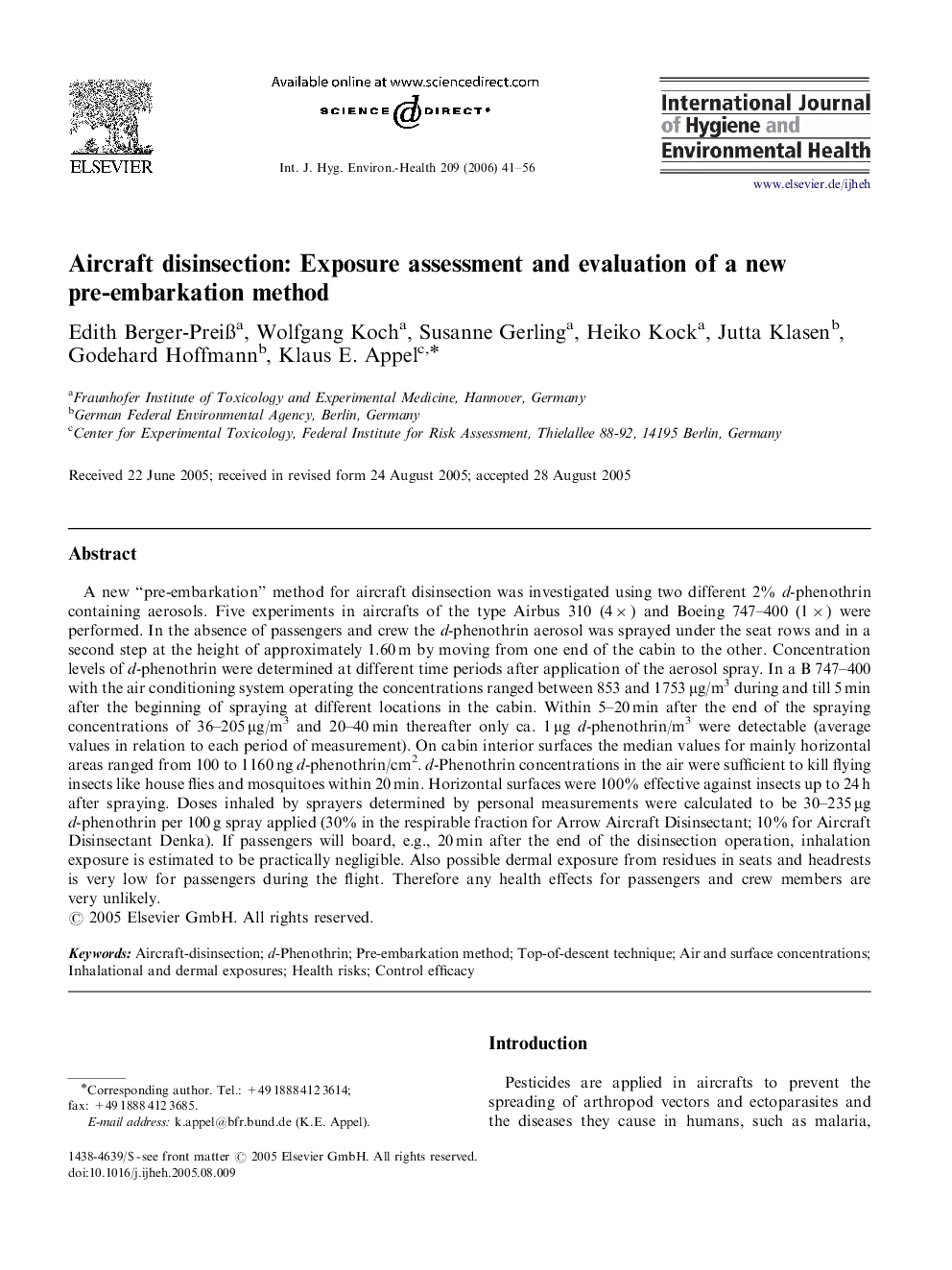| کد مقاله | کد نشریه | سال انتشار | مقاله انگلیسی | نسخه تمام متن |
|---|---|---|---|---|
| 2589332 | 1561943 | 2006 | 16 صفحه PDF | دانلود رایگان |
عنوان انگلیسی مقاله ISI
Aircraft disinsection: Exposure assessment and evaluation of a new pre-embarkation method
دانلود مقاله + سفارش ترجمه
دانلود مقاله ISI انگلیسی
رایگان برای ایرانیان
موضوعات مرتبط
علوم زیستی و بیوفناوری
علوم محیط زیست
بهداشت، سم شناسی و جهش زایی
پیش نمایش صفحه اول مقاله

چکیده انگلیسی
A new “pre-embarkation” method for aircraft disinsection was investigated using two different 2% d-phenothrin containing aerosols. Five experiments in aircrafts of the type Airbus 310 (4Ã) and Boeing 747-400 (1Ã) were performed. In the absence of passengers and crew the d-phenothrin aerosol was sprayed under the seat rows and in a second step at the height of approximately 1.60 m by moving from one end of the cabin to the other. Concentration levels of d-phenothrin were determined at different time periods after application of the aerosol spray. In a B 747-400 with the air conditioning system operating the concentrations ranged between 853 and 1753 μg/m3 during and till 5 min after the beginning of spraying at different locations in the cabin. Within 5-20 min after the end of the spraying concentrations of 36-205 μg/m3 and 20-40 min thereafter only ca. 1 μg d-phenothrin/m3 were detectable (average values in relation to each period of measurement). On cabin interior surfaces the median values for mainly horizontal areas ranged from 100 to 1160 ng d-phenothrin/cm2. d-Phenothrin concentrations in the air were sufficient to kill flying insects like house flies and mosquitoes within 20 min. Horizontal surfaces were 100% effective against insects up to 24 h after spraying. Doses inhaled by sprayers determined by personal measurements were calculated to be 30-235 μg d-phenothrin per 100 g spray applied (30% in the respirable fraction for Arrow Aircraft Disinsectant; 10% for Aircraft Disinsectant Denka). If passengers will board, e.g., 20 min after the end of the disinsection operation, inhalation exposure is estimated to be practically negligible. Also possible dermal exposure from residues in seats and headrests is very low for passengers during the flight. Therefore any health effects for passengers and crew members are very unlikely.
ناشر
Database: Elsevier - ScienceDirect (ساینس دایرکت)
Journal: International Journal of Hygiene and Environmental Health - Volume 209, Issue 1, 10 January 2006, Pages 41-56
Journal: International Journal of Hygiene and Environmental Health - Volume 209, Issue 1, 10 January 2006, Pages 41-56
نویسندگان
Edith Berger-PreiÃ, Wolfgang Koch, Susanne Gerling, Heiko Kock, Jutta Klasen, Godehard Hoffmann, Klaus E. Appel,